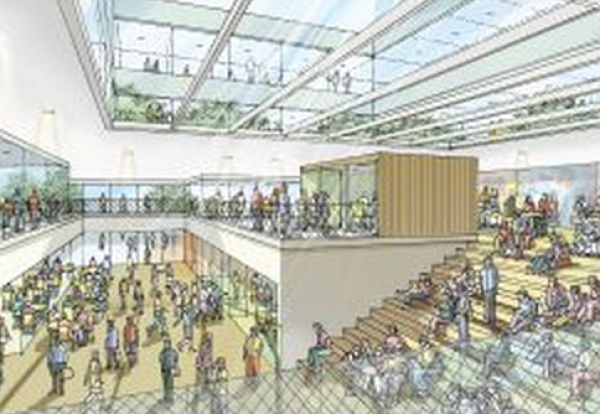University bosses have submitted a detailed planning application for a £60 million life sciences building and bio-innovation centre to Brighton and Hove City Council and Lewes District Council.
The new building on Sussex University’s Falmer campus is intended to harness expertise in life sciences, pharmaceuticals and medical technology.
The university said that its “landmark” building would create about 600 jobs across the area while the “state of the art” facilities would pave the way for life-changing scientific discoveries.
Plans for the “pioneering” Life Sciences Building would “transform the way that scientists carry out research and will provide students with a high-tech learning experience”, the university said.
It added: “The world-renowned school, which is one of the university’s largest academic facilities, boasts two previous Nobel Prize-winning scientists, Sir Harry Kroto and Sir John Cornforth, and is known for its high-quality teaching and ground-breaking research into conditions such as cancer and neurodegeneration as well as driving major advances in areas such as ecology and conservation, neuroscience and drug discovery.
“The new building, which has been designed by Hawkins Brown Architects, will remain true to the vision of the university’s founding architect, Sir Basil Spence, and will include the distinctive use of glass, concrete and brick that the institution is known for.

“Set over five floors, the new development, which will be built using the very latest sustainable materials, will include collaborative spaces for staff and students to work in, encouraging molecular biologists, zoologists, neuroscientists and chemists to carry out research alongside each other to develop new scientific insight.
“The building’s modern laboratories will also provide high-tech teaching spaces for students.
“In addition, the development will include a new Bio-Innovation Centre, which will be a hub for growing bio-medical businesses, strengthening the university’s partnerships with industry and creating more jobs in the region.”
Michael Davies, the pro-vice-chancellor for research at Sussex, said: “A big part of this initiative is about giving back to the community.”
Professor Davies said: “Our new building will help to create jobs and boost the local economy.
“By becoming a hub for bio-innovation we will also help to foster an emerging sector in the region which will have a legacy for years to come.
“We want to develop a building that enables us to teach the scientists of tomorrow, alongside producing ground-breaking research that changes people’s lives and makes local people proud.”
Professor Laurence Pearl, head of the School of Life Sciences, said: “Our new state-of-the-art building will ensure that we can continue to produce innovative world-leading research for decades.
“Our School of Life Sciences produces amazing scientists, including Nobel Prize winners, and continues to attract the very best researchers from all over the world to Brighton.”
Professor Pearl added: “The new building will enable our diverse teams of scientists to work more collaboratively alongside each other to make life-changing scientific discoveries.”
The development of the Life Sciences Building is part of Sussex University’s overall Campus Masterplan which already has outline planning permission.
The university plans to hold a number of public information days about the new building. For more information, visit the university’s website www.sussex.ac.uk.









No more building unless there is new accommodation built on site and not that which has already been passed.